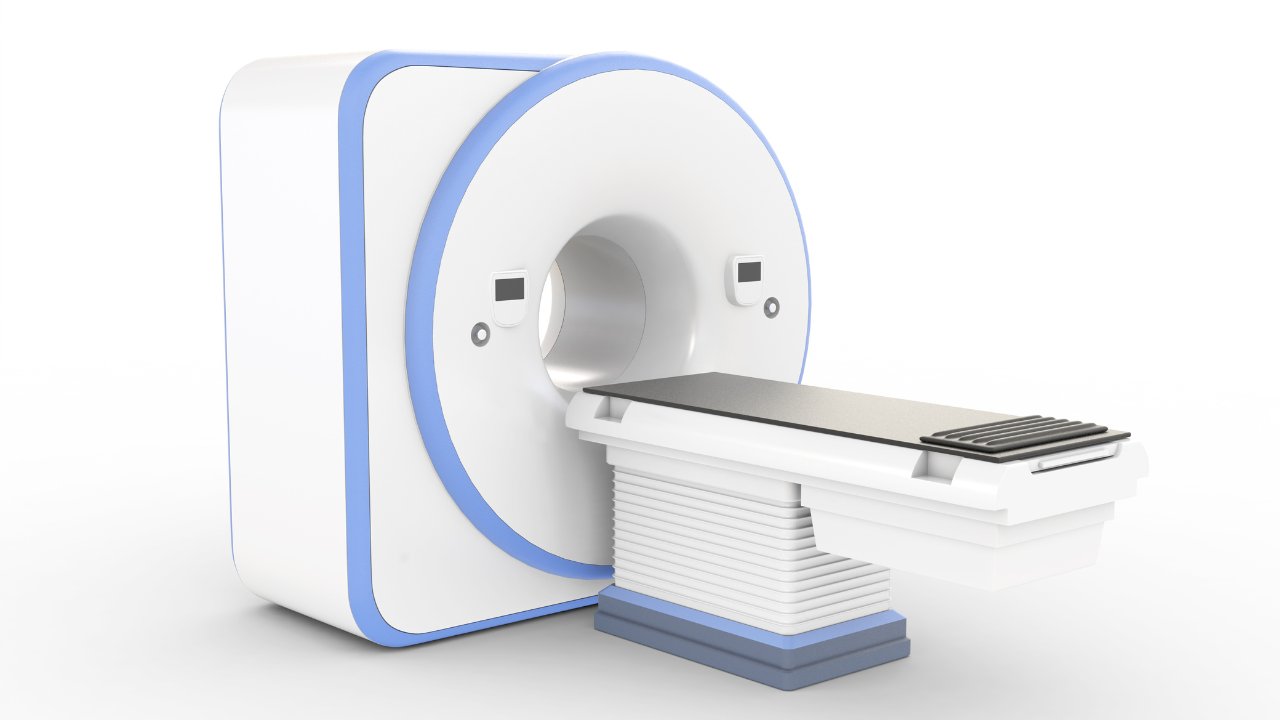Blog and News

You can help your child achieve optimal bone density by focusing on a balanced diet and regular physical activity. Ensure they consume plenty of calcium-rich foods like dairy and leafy greens, and don't forget about vitamin D, which is crucial for calcium absorption. Sunlight and fortified foods are great sources of vitamin D. Encourage your child to engage in physical activities such as jumping, running, and playing sports, which strengthen bones effectively. Keep an eye on their growth and make adjustments as needed. There's much more to explore on how these elements work together to support your child's bone health.
Listen to the Article
Key Takeaways
- Ensure a diet rich in calcium and vitamin D, including dairy, leafy greens, and fortified foods.
- Promote regular physical activities like jumping, running, and sports to strengthen bones.
- Limit screen time to encourage more outdoor play and physical activity.
- Monitor dietary intake and ensure a balance of necessary minerals like magnesium and phosphorus.
- Be a role model in maintaining a healthy lifestyle, including diet and exercise.
Understanding Bone Growth Patterns
Bone growth in children is a dynamic process, heavily influenced by nutrition and physical activity. When you're helping a child reach their full potential, understanding how their bones develop is crucial. From infancy through adolescence, bones lengthen and strengthen in a fascinating transformation that's vital for their future well-being.
During these years, bones are like busy construction sites. Cells called osteoblasts work diligently, building new bone, while osteoclasts break down old bone, recycling its materials. This balance ensures bones grow not just longer but stronger too. However, the rate of growth isn't constant. It spikes during infancy and then again during puberty, which are critical periods for bone development.
As a caregiver, you're in a unique position to support this natural growth. Engaging kids in activities that promote bone strength, like jumping, running, and other playful forms of exercise, can truly make a difference. These activities aren't just fun; they're essential building blocks for healthy bones.
Nutritional Guidelines for Bone Health
To ensure your child's bones receive the nutrients they need, focus on incorporating calcium-rich foods like dairy products, leafy greens, and fortified alternatives into their daily diet. Calcium is vital for building strong bones, especially during the rapid growth phases of childhood and adolescence. You can serve milk or yogurt at meals, and sneak some spinach or kale into smoothies or omelets for a nutrient-packed breakfast or snack.
Next, don't overlook the importance of vitamin D, which helps the body absorb calcium more effectively. While sunlight is a natural source, depending on your location and lifestyle, it mightn't be enough. Consider foods fortified with vitamin D like certain cereals, juices, and dairy products. A small serving of salmon or tuna can also boost your child's vitamin D intake significantly.
Also, ensure a good balance of other minerals like magnesium and phosphorus in their diet, which play a crucial role in bone health. Nuts, seeds, and whole grains are excellent sources of magnesium, while phosphorus is found in eggs, fish, and dairy.
The Role of Physical Activity
As you encourage your kids to eat well for strong bones, don't forget the importance of physical activity. Different types of exercises can be fun and help their bones become denser.
Let's explore which activities are best for various ages and how regular movement benefits their overall growth.
Exercise Types for Kids
Engaging in various types of physical activities can significantly enhance your child's bone strength and overall health. It's essential to choose exercises that are both fun and effective in promoting bone density. Here are some activities to incorporate into their routine:
- Jumping and Skipping: These movements create forces that stimulate bone growth and density.
- Dancing: Offers a fun way for kids to move vigorously, improving their bone health while expressing themselves creatively.
- Sports: Activities like soccer, basketball, or tennis not only help in building stronger bones but also teach teamwork and discipline.
- Gymnastics: Encourages flexibility and strength, providing a comprehensive workout that benefits bone structure.
Incorporating these exercises into your child's life will help them develop stronger, healthier bones while enjoying their active pursuits.
Benefits of Regular Movement
Regular physical activity boosts your child's metabolism and aids in the absorption of essential nutrients critical for bone health. When your child engages in regular exercise, their body becomes more efficient at directing calcium into their bones, rather than storing it in soft tissues. This isn't just good for their bones; it also supports overall growth and physical development.
Moreover, active kids are likely to maintain healthier body weights, reducing stress on developing bones and joints. Physical activity also increases blood flow, ensuring that vitamins and minerals reach the bone tissues effectively. This natural stimulation is crucial for forming strong bones that will support them throughout their lives, helping to prevent issues like osteoporosis later on.
Activity Recommendations by Age
To optimize your child's bone health, it's essential to tailor their physical activity based on their age group. Here's a guide to help you determine the right activities:
- Ages 1-3: Focus on free play that involves crawling, walking, and safe climbing. These activities help develop coordination and bone strength naturally.
- Ages 4-6: Introduce more structured play such as running, jumping, and ball games, which enhance bone density and motor skills.
- Ages 7-9: Encourage sports like soccer, gymnastics, or swimming that require agility, balance, and endurance, promoting overall bone health.
- Ages 10-12: Include activities that involve resistance, like climbing or martial arts, to further boost bone growth and strength.
These age-specific activities will support their bone development effectively.
Genetic Influences on Bone Density
Influencing your child's bone density significantly, genetics play a crucial role alongside diet and exercise. It's important to understand that while you can't change your child's genetic makeup, you can support their bone health through other controllable factors. Genetic predispositions affect how children process and utilize nutrients critical for bone development, such as calcium and vitamin D.
Some kids might inherently have denser bones than others, which is a factor you can't alter. However, you're not powerless. You can maximize their bone density potential by ensuring they get a balanced diet rich in bone-building nutrients. Encourage foods like dairy products, green leafy vegetables, and fish, which are high in calcium and vitamin D. Additionally, exposure to sunlight helps the body naturally produce vitamin D, crucial for calcium absorption.
Understanding your family's health history can also guide you in managing your child's bone health more effectively. If there's a history of osteoporosis or other bone-related issues, being proactive with diet and lifestyle changes is even more critical. Remember, every child is different, and while genetics set certain parameters, your nurturing through proper nutrition and physical activity can help them achieve their best bone health.
Recognizing Developmental Milestones
As your child grows, it's crucial to recognize developmental milestones that indicate healthy bone development. Observing these milestones helps ensure your child is on the right track nutritionally and physically, supporting optimal bone health as they mature.
Here are key milestones to watch for:
- Crawling and Walking: Typically, children begin to crawl between 6 to 10 months and walk between 9 to 18 months. These activities stress the bones in a healthy way, promoting bone density and strength.
- Growth Spurts: Notice periods of rapid growth, usually occurring around ages 2, 5, and during puberty. These spurts demand increased nutrients like calcium and vitamin D to support bone development.
- Physical Activity Levels: Children who engage in regular physical activities such as jumping, running, and playing are often developing strong bones. Encourage at least 60 minutes of physical activity daily.
- Dietary Habits: Pay attention to your child's appetite for and acceptance of bone-strengthening foods rich in calcium, vitamin D, and protein. These include dairy products, green leafy vegetables, and fortified cereals.
Recognizing and supporting these milestones with a balanced diet and regular physical activity can greatly contribute to your child's lifelong bone health.
Preventing Pediatric Osteoporosis
Most cases of pediatric osteoporosis are preventable with early dietary and lifestyle interventions. As a caregiver or parent, you're in a prime position to help the children in your care develop strong, healthy bones that can last a lifetime.
First and foremost, ensuring a diet rich in calcium and vitamin D is crucial. These nutrients are the building blocks of bone health. You can find calcium in dairy products like milk, cheese, and yogurt, as well as in leafy greens and fortified foods. Vitamin D, which helps the body absorb calcium, is available through exposure to sunlight and in foods like fatty fish and fortified milk. It's also worth considering a supplement if you're in an area with limited sunlight.
Physical activity is another key component. Encourage kids to play outside, engage in sports, or even take family walks. Activities that involve running, jumping, or climbing are especially beneficial as they promote bone density and strength.
Lastly, maintaining a healthy weight and avoiding smoking and excessive alcohol, even in teenage years, are important preventive measures. These lifestyle choices support overall health and aid in the development of strong bones during these critical growth years.
Indicators of Bone Health
You can monitor your child's bone health through several key indicators, including bone density tests and regular growth assessments. Understanding these markers helps ensure that your child's bones are developing properly and remain strong. It's crucial to keep an eye on these aspects to foster a foundation of robust health as they grow.
Here are four key indicators:
- Bone Density Tests: These scans measure how dense or strong bones are, showing the amount of bone mineral content. They're particularly useful in checking for any early signs of bone weakness.
- Growth Assessments: Regular check-ups with your pediatrician to monitor height and weight can indicate healthy bone growth. Sudden changes or stalling in growth might signal bone health issues.
- Physical Activity Levels: Active children generally have stronger bones. Encouraging regular play, sports, and exercise can significantly benefit bone density.
- Dietary Intake: Calcium and vitamin D are essential for bone health. Monitoring your child's intake of these nutrients, through dairy products, green leafy vegetables, and appropriate supplements, is vital.
Limitations on Screen Time
While you might love catching up on your favorite TV shows or playing video games, it's important to balance screen time with activities that get you moving.
Managing how much time you spend in front of screens can help make room for more physical play, which is great for building strong bones.
Encouraging outdoor activities not only strengthens your body but also provides essential nutrients like vitamin D from sunlight.
Encouraging Outdoor Activities
Encouraging children to spend more time outdoors can significantly reduce their screen time and promote stronger bones through physical activity. By engaging in outdoor play, kids not only build physical strength but also benefit from exposure to sunlight, which is crucial for vitamin D synthesis—a key player in bone health.
Here are some engaging outdoor activities to consider:
- Jump rope: This simple activity improves coordination and builds leg bones.
- Soccer: Encourages running and teamwork, enhancing bone density.
- Gardening: Involves various movements that strengthen different body parts.
- Hiking: Offers exposure to nature and uneven terrain, which is great for building strong bones.
Encourage these activities to help your kids grow healthier and happier!
Screen Time Management
Balancing outdoor activities with reduced screen time can further optimize bone health in children by limiting sedentary habits. You'll want to set practical limits on the use of TVs, computers, and mobile devices. Reducing screen time helps encourage more physical activity, indirectly supporting bone development through healthier, more active behaviors.
Consider replacing some screen time with activities that involve movement. Even simple changes like walking or playing interactive games that require physical activity can make a significant difference.
It's also beneficial to be mindful of the nutritional content of meals during screen time, as mindless snacking can often occur. Offering nutritious snacks like fruits and vegetables instead of processed foods can contribute positively to your child's bone health and overall well-being.
Benefits of Physical Play
Physical play boosts your child's bone strength and overall health by reducing time spent on sedentary activities like watching TV or playing on mobile devices. Encouraging active play isn't just good for their physical health; it also nurtures their mental and emotional well-being. Here's how you can help:
- Limit Screen Time: Implement rules that prioritize active play over screen time.
- Encourage Outdoor Activities: Promote activities like cycling, hiking, or team sports.
- Provide Nutritious Snacks: Offer calcium-rich snacks like yogurt or cheese to fuel their play.
- Be a Role Model: Engage in physical activities with your child to motivate and guide them.
Adopting these steps ensures your child enjoys a healthier, more active lifestyle, crucial for developing strong bones and a vibrant spirit.
Frequently Asked Questions
How Does Climate Impact Bone Development in Children?
Research shows climate influences children's bone development. In colder climates, reduced sunlight leads to lower Vitamin D, crucial for bone health. Ensure they get enough through diet or supplements to support their growth.
Can Allergies Affect a Child's Bone Density?
Yes, allergies can affect your child's bone density, especially if they lead to malabsorption of crucial nutrients like calcium and vitamin D. Ensuring a balanced diet can help mitigate these effects.
Do Sleep Patterns Influence Childhood Bone Strength?
Early to bed, early to rise, makes your bones healthy, strong, and wise! You'll find that regular, quality sleep significantly bolsters bone strength in kids, enhancing growth and overall health.
What Are the Effects of Stress on Children's Bone Health?
Stress can negatively impact your child's bone health, weakening bones over time. Encourage stress-reducing activities like mindfulness and ensure a balanced diet to support strong bones. Caring for their well-being is crucial.
How Do Childhood Illnesses Impact Long-Term Bone Density?
Childhood illnesses can be thorns in the side of your bone health garden. Ensuring kids get enough calcium, vitamin D, and nutritious foods helps safeguard their bone density as they bloom.






